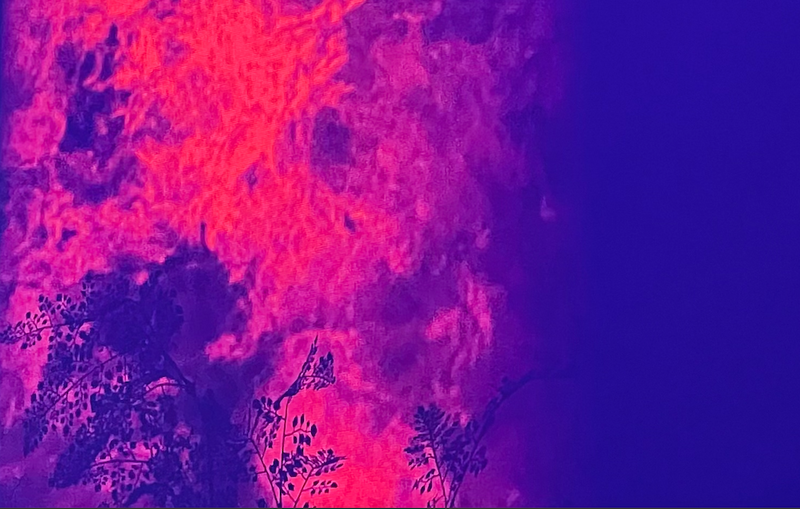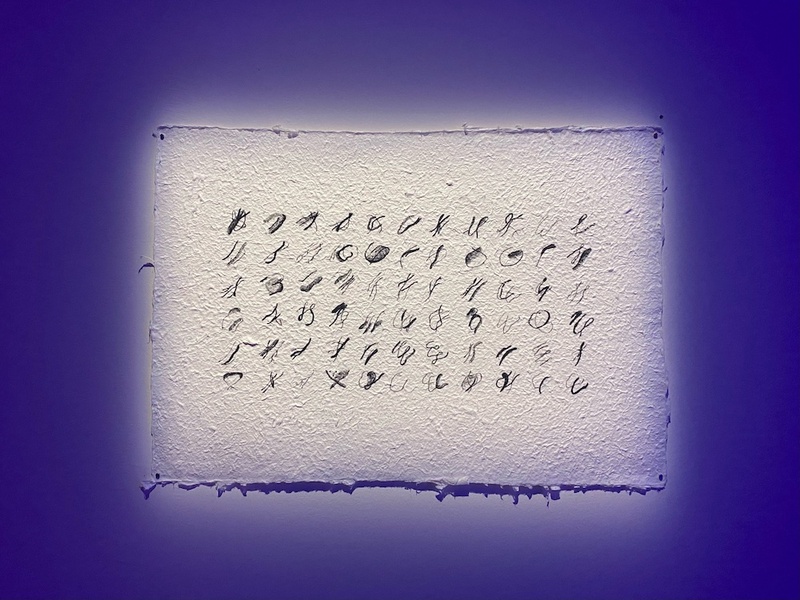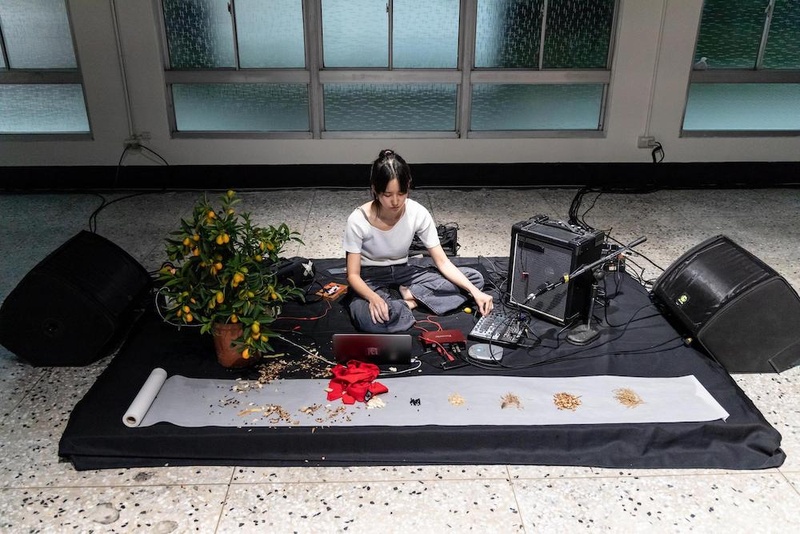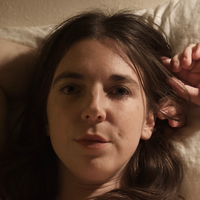On the creative potential of active listening
Prelude
Sheryl Cheung works between experimental music, abstract scoring, and writing to explore a materialist understanding of power, emotion, and moral order. She earned her Master of Arts from University of Manchester (2009) and her Bachelors of Fine Arts from Pratt Institute (2005). Cheung has held supported residencies, workshops, and research projects in China, UK, Thailand, Korea, and Taiwan. Her work, performances, and collaborative projects have been shown at Taiwan Biennial 2020, Flaneur Festival 2019, Taipei Biennial 2018, Asian Meeting Festival, Somerset House studios, Osmosis Festival and Chronus Art Center, among others. Sheryl is a co-founder of lololol.net, an art project that is currently exploring Taoist-informed mind and body technologies.
Conversation
On the creative potential of active listening
Sound artist Sheryl Cheung discusses working in a void, using the body as an instrument, and the power of exploring our inner landscapes.
As told to Grashina Gabelmann, 1701 words.
Tags: Art, Sound, Process, Inspiration, Mental health.
You work with sounds. What were your first forms of listening?
My first forms of listening come from singing with my mother, she would teach me how to intuit harmony, improvise parts, and in the process, emotionally attune to each other. Then with her encouragement I got pretty involved in formal vocal training to make my instrument more versatile. The training was very much about forming spaces inside your body, which reminds me of my experiences moving inner energy in Tai Chi, dealing with channels and vents and making spaces. In both cases, practitioners strive to virtually imagine how things travel within and how this movement can be detected while you listen to the breath being formed. I was really fascinated by the idea of sculpting dynamics within an inner landscape, where there are forces of nature to move energy along, creating resonances, making networks. In my days of vocal training, the imagined inner landscape was pastoral and aimed towards a specific spirituality. You must have faith in order to perform well in this kind of art form, and so eventually I started to search for other ways of making music. Because as much as I’m interested in it, I didn’t seem to be of that faith in particular.

Xia Lin, Sheryl Cheung and Liam Morgan, Performance of Sun Moon Lake is a Concrete Box at Taipei Art Festival, 2020; Photo courtesy of Lee Hsin-che
What forms of listening did you then approach?
I began to experiment with new imaginations of inner landscape, seeking to connect with a divine that I can identify with. The way I approach sound eventually became very material, I work a lot with concrete sounds, digital and analog—as cries from the material world, which I end up calling “noise.”
How do you turn sound into material?
I like manipulating sound and mediating its energy as a way to ease the very strict structures we find ourselves in, structures that frame the way we are situated in this world. Sound, for me, tends to have a strong malleable presence, it can mean many things at once, it calls forth impossible worlds before proper representation. It can be super, super big and it can also let you go into something very microscopic or even into something internal thus becoming a more free flowing movement.
So, working with this more flowing or in flux quality of sound?
Yes, and how we can use that to think about belonging in the world, or rethink our relationships to things that may look passive in our human register of being.
Since I work with the idea of inner worlds, and I can’t literally see what’s within myself, in a sense I am always working in a void, and in this void, there is an inability of cling to any single stream of thought, the sense of illumination is always sporadic. There is a sense of freedom that comes with this temporality.
This is where your interest in Tai Chi comes into play?
Yes. I am interested in an energetic view of the world. Tai Chi follows the belief in the naturalized divine, and an ability to shape-shift between all forms of life which are interconnected in one single ecosystem. When I first started working with plants in my sound performances, I began with the idea of plants as an emotional being, not as a form personification, but thinking about life in general as an expression of power. Something is alive and therefore it is powerful, and the level of its power is modulated by our emotional state, as rephrasing Spinoza, Conatus is like an instrument continually played by affects.
How does this energetic view on the world mingle with your creative practices?
As my current imaginations of the inner world references the naturalized divine, I am confronted with questions of the contemporary when nature is rapidly changing before our eyes. How can we think about that and how do we actually connect to it? How is climate change reflected in our inner beings? I’ve been working on a few sound pieces that are related with the idea of inner climate.
How do you let go in your work?
Since the pandemic outbreak, I’ve been collecting alternative medicines that are offered as COVID remedies. Vaccinations are made out to be the ultimate solution and everything beyond that is labeled as myth, which was quite interesting to me. I started thinking about the value of myths and the value of ‘alternative medicines’ in this day and age where it seems so urgent for us to be healthy. It seems that the stakes are high for us to use very modern techniques to solve the world’s problems.
In Taiwan, there are officially sanctioned anti-covid tea and treatment soups. I’ve been working with herbal formulas of this nature, creating scores and making compositions that treat the inner being, in a time when living is tense. My approach to sounds forces me to let go of answers. My current interest in creating immersive sonic soup is an idea not of immediate healing but as a way to reposition the future. It’s an approach that I perhaps cannot own by myself or cannot grasp concretely.

Venom Anti Venom installation at Taiwan Biennial, 2021; Photo courtesy of artist

Venom-Anti-Venom score, 2021; Photo Courtesy of artist
When you say that you are “scoring” what does it mean because I know that you don’t using scoring for writing music that others can then read?
When I score, I am looking for a state of trembling, the forming of clusters rely on chance, I move elements around until they make noise in my head. I work with plants, roots, herbal medicine gathered from a site or medicine shop, I take these formulas apart to see what can be revealed. My scores are visual yet they are still somehow clinical, gridded and very rationally put together. There’s still a clear cadence of different clusters but I’m thinking about the energy between these different herbs and how those relations manifest.
You express this visually and then you find a way of transporting that into sound?
Scoring is a process of listening, so while I’m drawing the score I’m also exploring its performative potential. That doesn’t mean I confine my source of sound solely to the score, as in Taoist philosophy, different scales of things run into each other, a flow of form and essences. With the five elements that govern all of the world, your stomach can sound as vast as a tulmultuous ocean. Traditionally, Chinese attitude to technology is also quite interpretive, as demonstrated by the many picturesque, anecdotal technical diagrams of the inner body.
I like what you once wrote about the affects of having grown up in different cultures and being affiliated with different communities: “Active listening became a way to deepen my awareness of the multi-worlds and to see how negotiating between the noise of nature and noise of cultures.”
When you’re in a culture that apparently doesn’t belong to you, as was the case often for me growing up, there isn’t much space for you to say anything because you don’t own it. Active listening becomes a form of participation and by letting something in, you create a space within yourself in which you can respond. In a way, it’s playing with the power of what seems to be passive and indirect but is actually something that can be very revealing.

Little Dragon Soup score, 2021

Little Dragon Soup performance at C-LAB, 2018
Do you think of active listening as a way to get permission to speak?
I think so. It’s a very Taoist approach to things, as Yuk Hui write in his book Question Concerning Technology in China, “Heaven does not speak, it contents itself to produce the seasons and to act continuously by way of its seasonal influxes.” This approach to letting go to flow allows a freedom against calculation.
I know that I make myself feel more comfortable when in an environment that’s not mine by observing, listening and creating a space to hold others. That makes me feel more at ease than claiming my own space.
Yeah. It’s like you go to a place, but then you create a fluid place on top of it where you can go up and play for a little while.
So, what do you mean when describe the body as an instrument of affects?
I think it was Deleuze who once said, “Power always creates sadness on the other side.” Power and materiality and ethics tend to go hand in hand. And when I think about sound, sound being so intuitive, it creates diffractions of affects that escape representation. I tend to use a lot of sounds that are within my body or within other life forms. By dwelling on ideas of the inner landscape, there’s a natural exploration of ethics that comes with it.
I do think sound takes us into an emotional realm, and if that is the basis that I create sound with, then in a way I work with modulating the materiality of emotions.
Sheryl Cheung Recommends:
Future Tao: The Great Shift, a virtual martial arts narrative by lololol
Clear Waters, Green Mountains, Mountains of Silver and Gold, an interview in LEAP magazine 2020
Immortal Sisters, selected illuminations on Feminist Taoism by Thomas Cleary
Senko Issha Live, performance recording by Taiwan noise musician Dino
Question Concerning Technology in China, a book for technodiversity by Yuk Hui
- Name
- Sheryl Cheung
- Vocation
- Sound artist
Some Things
Pagination



